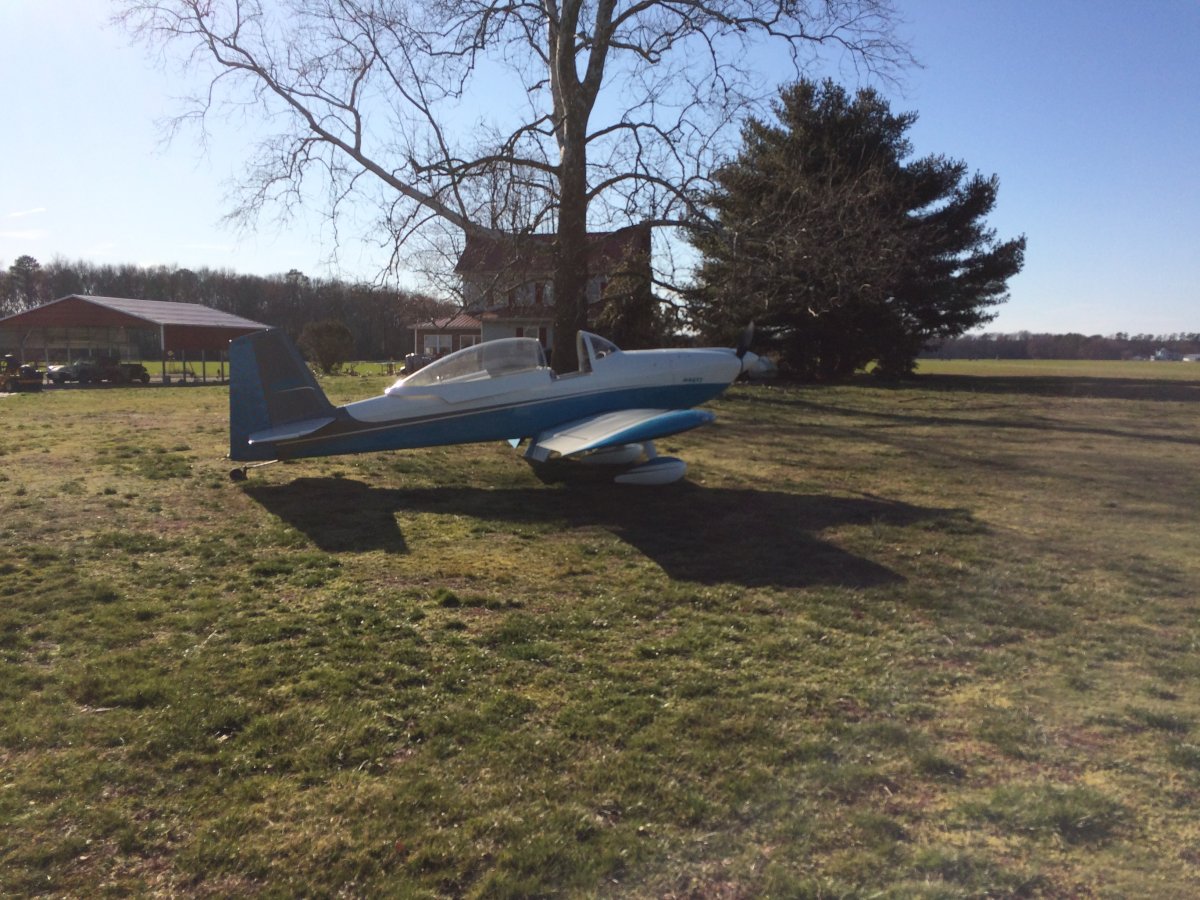February 23, 2020 - FunFly Eastern Shore
The weather this Sunday in late February was amazing: clear, phenominal visibility, light winds, mild temperature. Everyone at Essex Skypark was flying.
I started off flying with Charlie -- Chip's 16-year old son -- who is just embarking on his flying career. He has soloed, has over 100 hours in multiple types of planes, and should be taking his private pilot's exam checkride soon.




Mugsy was at Essex Skypark when Charlie and I returned. He and thought about flying somewhere for lunch but no place we hadn't been to recently excited us. I said "let's just drive into town and go to Pizza Johns" which in my opinion has the best pizza in the world. So we did that. But we got there and an employee standing out front told us their computer system was down, they couldn't take orders, and they were closed! Talk about bad timing. So, we ended up having crab cakes at my nearby alternate: Schultze's Crab House.
Back at the Skypark, Mugsy and I took off and did a formation flyby over the field, before heading over to the Eastern Shore for some fun fly.












Tommy raises chicken for a big poultry outfit. But one of the long sheds is not filled with chickens but with vehicles of all types including airplanes.
Here a ghostly Cessna 140 looms out of the gloom.


A 1966 Helton LARK 95 that has seen better days. Later, I was amazed at the Lark's history.
The Helton Lark 95 was a derivative of the Culver Cadet which originally was the Culver Dart. In the early 1930s Al Mooney was working for the Lambert Aircraft Corporation, builders of the Monocoupe series aircraft. He designed a small two-seat monoplane, the Monosport G. When the company ran into financial difficulties Mooney bought the rights to his design and with K.K. Culver formed the Dart Aircraft Company. The aircraft was renamed the Dart Dart. In 1939 the company was renamed the Culver Aircraft Company and the aircraft was renamed the Culver Dart. [Much better!]
Al Mooney developed an improved version of the Culver Dart, to provide improved performance with a smaller engine. Originally designated the Culver Model L the prototype first flew on 2 December 1939. The aircraft was named the Culver Cadet. The Cadet was one of six models that Al Mooney designed during his eight years at Culver. He would leave to found Mooney Aircraft. The Mooney M20, of course, is one of the great planes in general aviation history. The M20 was the 20th design from Al Mooney, and his most successful. The series has been produced in many variations over the last 60 years, from the wooden-wing M20 and M20A models of 1955,to the M20V Acclaim Ultra that debuted in 2016. More than 11,000 aircraft in total have been produced.
Finally, back to the Helton Lark 95. It was developed from the Culver Cadet by the Helton Aircraft Corporation of Mesa, Arizona. It's powered by a 90 horsepower Continental C90-16F engine. The FAA type approved it in September 1966. 15 Lark 95s delivered in 1966. Helton reported as out of business in 1971. So it is a fairly rare general aviation aircraft.



Some Alpacas! I've seen Alpacas before, in New Zealand.
The Alpaca is a species of South American camelid descended from the vicuña. [As Johnny Carson would say, "I did not know that."] It is similar to, and often confused with, the llama. However, alpacas are often noticeably smaller than llamas. The two animals are closely related and can successfully cross-breed. Alpacas have almost human-like hair which makes for itch-free sweaters unlike sheep wool.


By now it was late afternoon and time to head for home. Mugsy headed back to Easton and I climbed to 2,500 and enjoyed a nice, relaxing flight back to Essex.
Here I'm looking north at the Choptank River.






